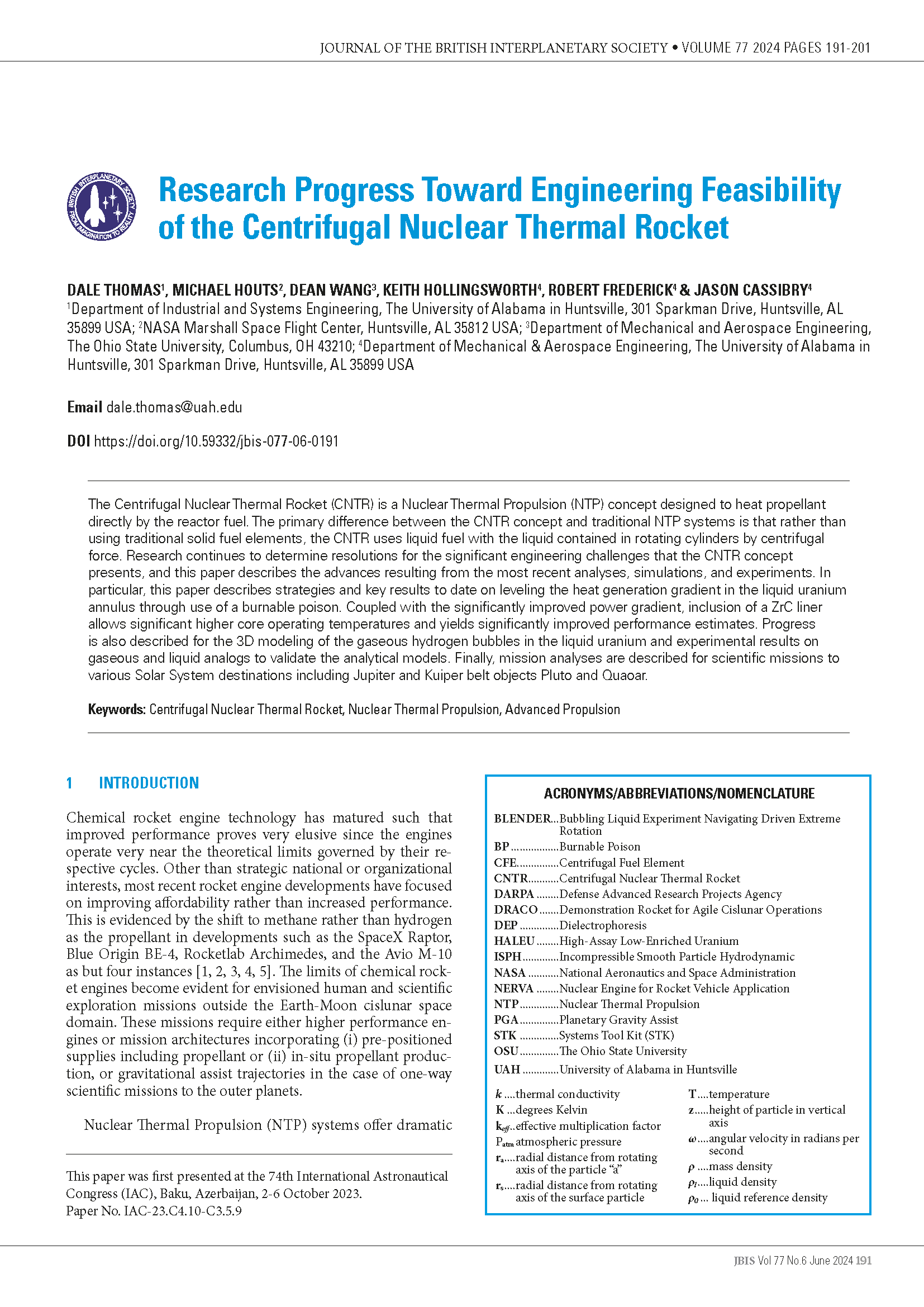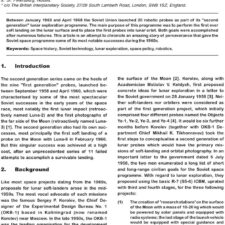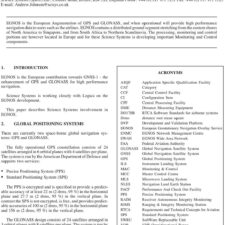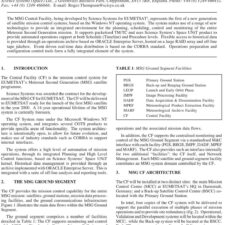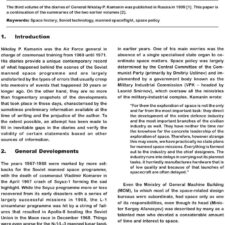Research Progress Toward Engineering Feasibility of the Centrifugal Nuclear Thermal Rocket
£5.00
Dale Thomas, Michael Houts, Dean Wang, Keith Hollingsworth, Robert Frederick & Jason Cassibry (2024), JBIS, 77, pp. 191-201
Refcode: 2024.77.0191
DOI: https://doi.org/10.59332/jbis-077-05-0191
The Centrifugal Nuclear Thermal Rocket (CNTR) is a Nuclear Thermal Propulsion (NTP) concept designed to heat propellant directly by the reactor fuel. The primary difference between the CNTR concept and traditional NTP systems is that rather than using traditional solid fuel elements, the CNTR uses liquid fuel with the liquid contained in rotating cylinders by centrifugal force. Research continues to determine resolutions for the significant engineering challenges that the CNTR concept presents, and this paper describes the advances resulting from the most recent analyses, simulations, and experiments. In particular, this paper describes strategies and key results to date on leveling the heat generation gradient in the liquid uranium annulus through use of a burnable poison. Coupled with the significantly improved power gradient, inclusion of a ZrC liner allows significant higher core operating temperatures and yields significantly improved performance estimates. Progress is also described for the 3D modeling of the gaseous hydrogen bubbles in the liquid uranium and experimental results on gaseous and liquid analogs to validate the analytical models. Finally, mission analyses are described for scientific missions to various Solar System destinations including Jupiter and Kuiper belt objects Pluto and Quaoar.
Keywords: Centrifugal Nuclear Thermal Rocket, Nuclear Thermal Propulsion, Advanced Propulsion

